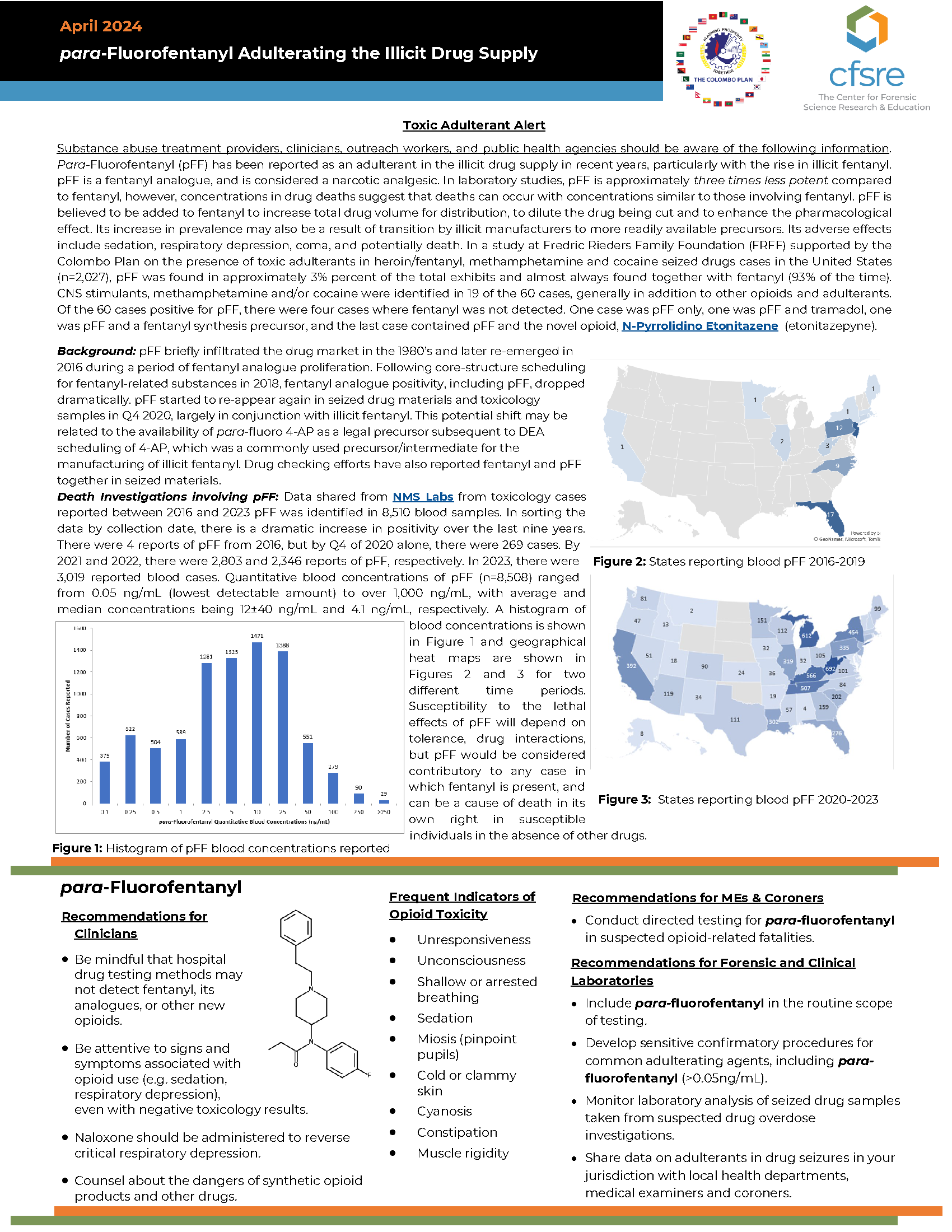para-Fluorofentanyl (pFF) has been reported as an adulterant in the illicit drug supply in recent years, particularly with the rise in illicit fentanyl. pFF is a fentanyl analogue, and is considered a narcotic analgesic. In laboratory studies, pFF is approximately three times less potent compared to fentanyl, however, concentrations in drug deaths suggest that deaths can occur with concentrations similar to those involving fentanyl. pFF is believed to be added to fentanyl to increase total drug volume for distribution, to dilute the drug being cut and to enhance the pharmacological effect. Its increase in prevalence may also be a result of transition by illicit manufacturers to more readily available precursors. Its adverse effects include sedation, respiratory depression, coma, and potentially death. In a study at the Fredric Rieders Family Foundation (FRFF) supported by the Colombo Plan on the presence of toxic adulterants in heroin/fentanyl, methamphetamine and cocaine seized drugs case in the United States (n=2,027), pFF was found in approximately 3% percent of the total exhibits and almost always found together with fentanyl (93% of the time). CNS stimulants, methamphetamine and/or cocaine were identified in 19 of the 60 cases, generally in addition to other opioids and adulterants. Of the 60 cases positive for pFF, there were four cases where fentanyl was not detected. One case was pFF only, one was pFF and tramadol, one was pFF and a fentanyl synthesis precursor, and the last case contained pFF and the novel opioid, N-Pyrrolidino Etonitazene (etonitazepyne).
April 9, 2024
Toxic Adulterant Alert: para-Fluorofentanyl Adulterating the Illicit Drug Supply









